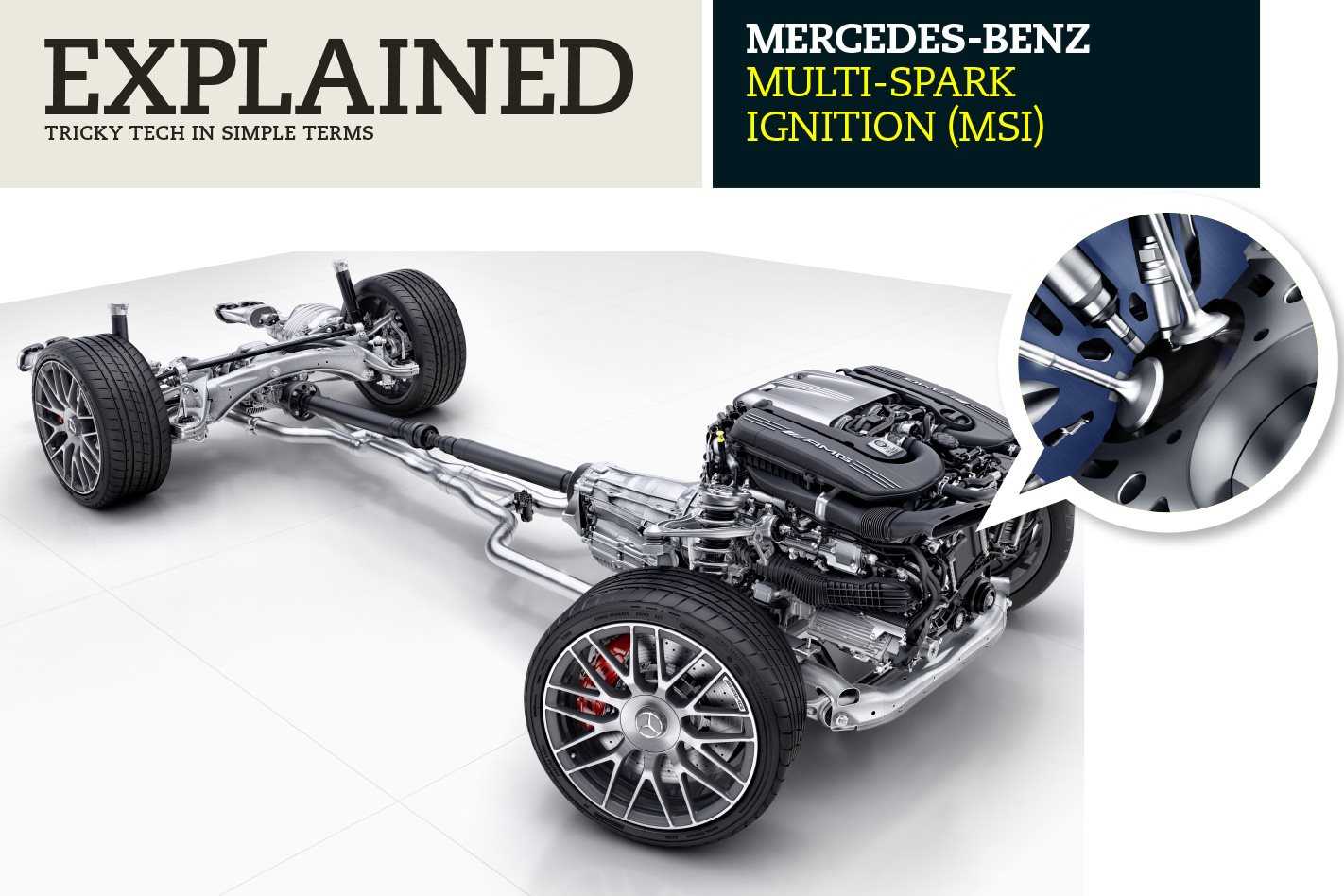What is it?
The latest version of Mercedes-Benz’s variable-spark ignition system for petrol engines. While many ignition systems rely on a single spark to ignite the mixture of fuel and air in the combustion chamber, the Multi-Spark Ignition (MSI) can fire the spark plug up to five times per power stroke.
Many of the German manufacturer’s engines are adopting the sophisticated system including its hero hand-built AMG 4.0-litre twin-turbo V8, which powers a wide range of potent machines across Mercedes’ passenger and SUV line-up.
How does it work?
In all petrol engines, as the piston rises to the top of the compression stroke, the ignition system fires a spark to initiate a controlled burning of the air/fuel mixture. This means the spark plug has just one chance to start a good combustion process, which, under normal conditions, is a relatively simple process. However, under certain conditions, such as when the mixture is lean or the engine load is light, the vaporised fuel can be more difficult to ignite, so the MSI has five shots at it. With each spark, the combustion ‘kernel’ grows, allowing the flame front to spread to a greater area of the combustion chamber for more efficient and consistent combustion. If a single-spark system is like trying to start a damp camp fire with a flint, the multi-spark ignition is the equivalent of using a Zippo. With more conventional systems, the ignition coils have two entire engine revolutions to recharge for the next spark, but the MSI coils must be able to deliver all five sparks in one millisecond, which requires an incredibly high-energy system and specialised components.
Why does it matter?
For optimum combustion and power, a petrol engine prefers to burn a mixture of fuel and air at a ratio of 14.7 parts of air to every one part of fuel – known as the stoichiometric ratio. But in the quest for ever-more efficient engines, manufacturers have been experimenting with far leaner ratios, where there is less fuel for each part of air. Typically, lean mixtures are difficult to ignite and can cause potentially damaging ‘detonation’ where the combustion is violently fast, but the five sparks allow mixtures as lean as 23:1 – less fuel for the same power. At full-throttle and under high engine loads, stoichiometric is still king but the MSI system is allowing Mercedes’ high-output engines to sip less fuel during low-load conditions, boosting fuel economy and lowering emissions, without compromising peak performance. Fuel savings of two percent might sound like small fish, but that figure can be doubled in conjunction with the company’s stratified charge and direct fuel injection, says Mercedes. As ever-tightening emissions regulations loom, every drop counts.





